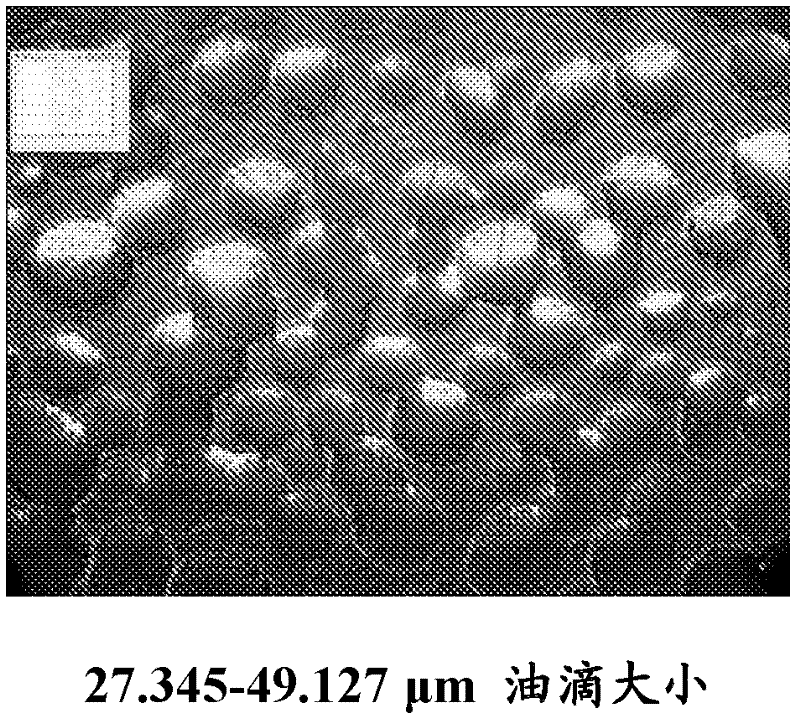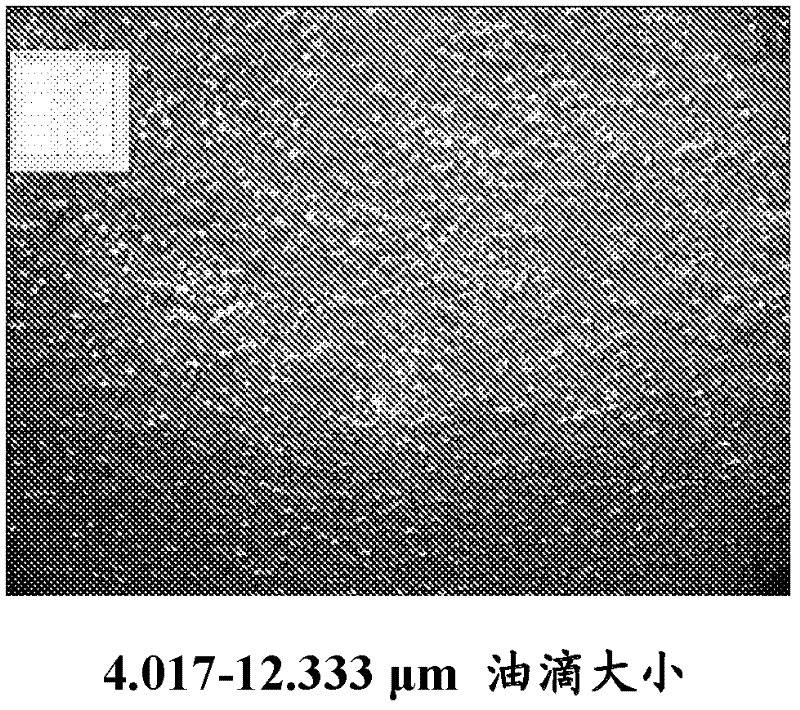Color cosmetic comprising random terpolymer
A terpolymer, cosmetic technology, applied in the direction of cosmetics, cosmetics, cosmetic preparations, etc., can solve the problems of dull appearance, dull and dull color of the composition, etc.
- Summary
- Abstract
- Description
- Claims
- Application Information
AI Technical Summary
Problems solved by technology
Method used
Image
Examples
preparation example Construction
[0189] Preparation of random terpolymers
[0190] Component (b) Random terpolymers of formula (I) can be prepared in a conventional manner, for example, by bulk or solution polymerization. In view of the controllability of the polymerization reaction and the viscosity of the final product, polymerization in a solvent is preferred. Suitable solvents are dimethylsulfoxide, THF, DMF, ethyl, propyl, butyl, acetate, benzene, toluene, xylene, n-butanol, isobutanol, isopropanol, MEK, MIBK, acetone ,wait.
[0191] The monomers are preferably polymerized using free radical reactions by adding peroxides, optionally in the presence of redox systems.
[0192] The polymerization time of the random terpolymer of component (b) formula (I) depends on the temperature and the desired properties of the final product, but is preferably in the range of from about 50°C to about 190°C within from 0.5 to 10 hours Inside. The polymerization reaction may be carried out continuously, discontinuous...
Embodiment 1
[0257] Example 1 - Random Terpolymer
[0258] In a reaction flask with a reflux condenser suitable for polymerization, dissolve 9.86 g xylene and 4.93 g methoxypropyl acetate, 2.84 g vinyltoluene, 4.55 g isobutyl methacrylate, 7.36 g 2- Ethylhexyl ester, 5.20 g 2-hydroxyethyl methacrylate, 1.80 g polyethylene glycol monomethacrylate having a molecular weight of about 400, and 0.44 g di-tert-butyl peroxide. At the boiling point of the mixture, an inert gas is introduced, and the polymerization reaction is carried out while stirring. At the end of the polymerization, 9.79 g of isophorone diisocyanate was dissolved in 16.58 g of isobutyl acetate and 16.58 g of methoxypropyl acetate, and then mixed with 3.60 g of polyethylene glycol monomethyl acetate having a molecular weight of about 400 Acrylate and 4.51 g of 1-(3-aminopropyl)imidazole were used to convert the remaining free NCO groups.
[0259] The solids content was then adjusted to 40% by weight with butyl acetate.
[0...
Embodiment 2
[0261] Example 2 - Random Terpolymer
[0262] In a similar manner to Example 1, 3.54 g of vinyl toluene, 5.69 g of isobornyl methacrylate, 9.20 g of 2-ethylhexyl methacrylate, 7.15 g of hydroxyethyl methacrylate, and 1.28 g di-t-butyl peroxide was dissolved in 11.94 g xylene and 5.97 g methoxypropyl acetate and polymerized.
[0263] Subsequently, 12.23 g of isophorone diisocyanate were dissolved in 20.36 g of butyl acetate and 20.36 g of methoxypropyl acetate, and added. The remaining free NCO groups were then neutralized with 4.50 g of polyethylene glycol monomethacrylate having a molecular weight of approximately 400 and 3.78 g of 3-amino-1,2,4-triazole in 11.34 g of N-methylpyrrolidone. The group is transformed.
[0264] The solids content was then adjusted to 40% by weight with butyl acetate.
[0265] According to structural formula (I), component M is vinyltoluene, and y is 7.7% by weight, relative to the total weight of the terpolymer; Component T is a mixture of is...
PUM
| Property | Measurement | Unit |
|---|---|---|
| molecular weight | aaaaa | aaaaa |
| molecular weight | aaaaa | aaaaa |
| molecular weight | aaaaa | aaaaa |
Abstract
Description
Claims
Application Information
 Login to View More
Login to View More - R&D
- Intellectual Property
- Life Sciences
- Materials
- Tech Scout
- Unparalleled Data Quality
- Higher Quality Content
- 60% Fewer Hallucinations
Browse by: Latest US Patents, China's latest patents, Technical Efficacy Thesaurus, Application Domain, Technology Topic, Popular Technical Reports.
© 2025 PatSnap. All rights reserved.Legal|Privacy policy|Modern Slavery Act Transparency Statement|Sitemap|About US| Contact US: help@patsnap.com



